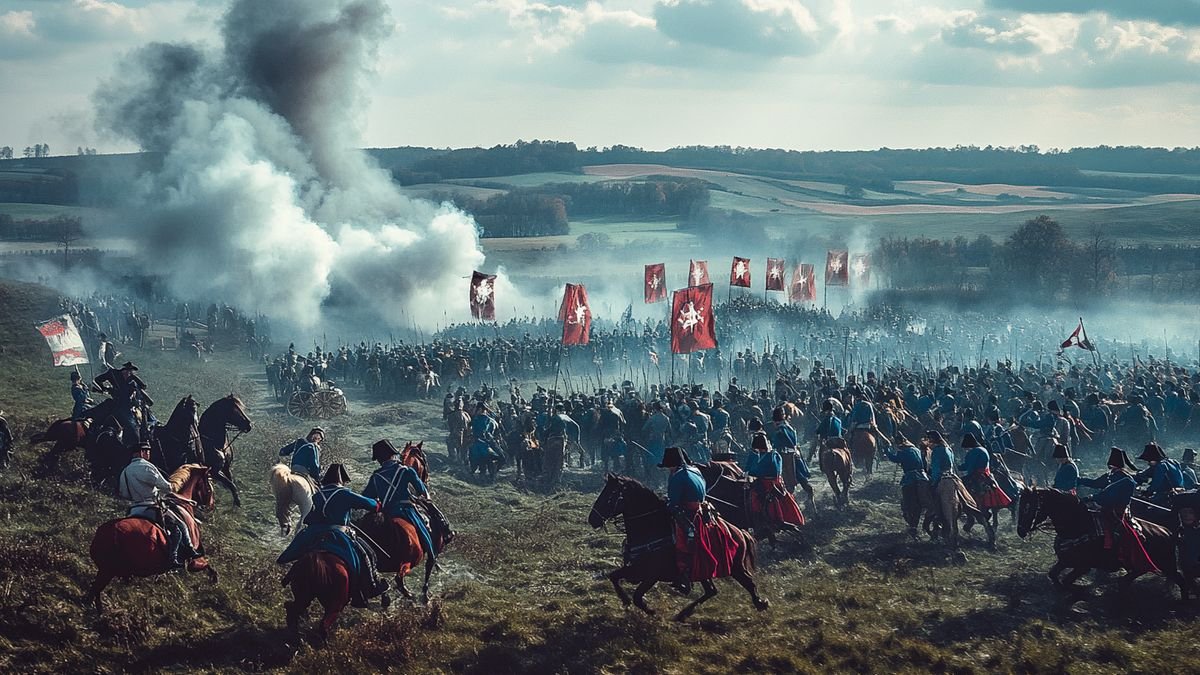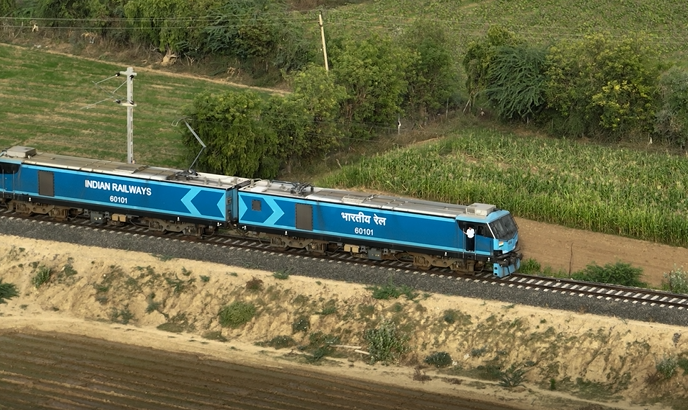The mid-18th century was a time of major conflict and change in both Europe and the wider world. European powers like Britain and France were fighting to expand their influence, not just in Europe but also in their colonies. Wars like the War of Austrian Succession (1740–1748) and the Seven Years’ War (1756–1763) showed how deeply these countries were competing for global power. This broader power struggle found its echo in India as well, where the Carnatic region in South India became a significant battleground , where the British and the French fought three major wars, known as the Carnatic Wars. These wars were not just about control over parts of India—they were closely linked to what was happening in Europe and other colonies around the world. Britain’s victory in these wars pushed France out of Indian politics and helped Britain become the main colonial power in India. This success played a big role in making Britain a global superpower and shaped the world order for years to come.
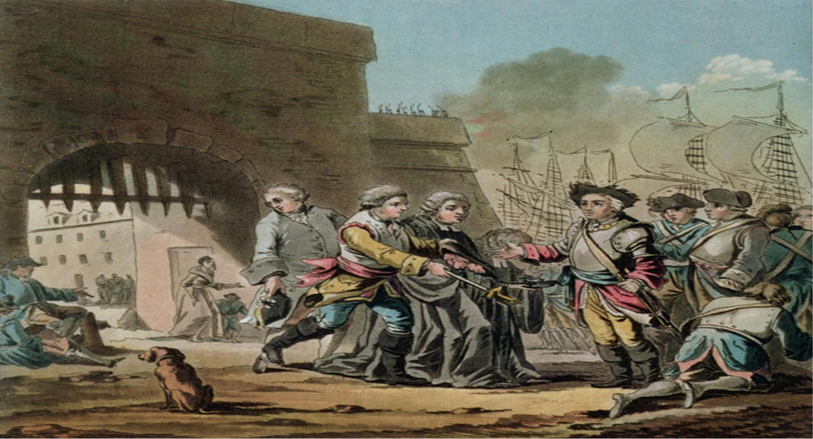
THE STORY OF CARNATIC WARS
The story of the Carnatic Wars begins far from Indian soil, in the heart of Europe, where both Britain and France were trying to expand their global dominance and they even got the chance to prove themselves during the war of Austrian Succession(1740-1748).
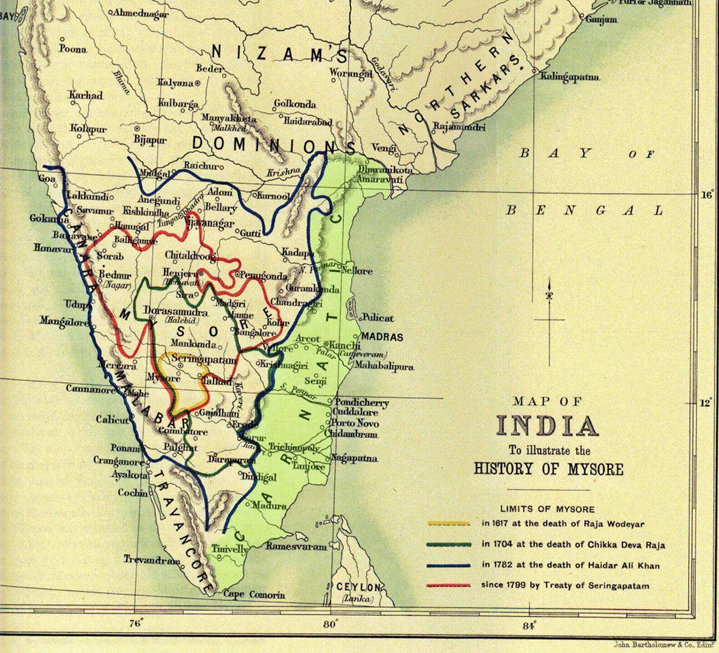
The Carnatic Region shown on 1897 map of India
It All Began in Europe: War of Austrian Succession (1740–1748)
In 1740, the death of Emperor Charles VI shook the Austrian Empire. His daughter, Maria Theresa, was to inherit the throne, but many European powers saw her as weak. Sensing an opportunity, Prussia’s Frederick the Great invaded Silesia, and France joined in, backing Prussia to weaken Austria.
On the other hand, Britain supported Austria, not out of love, but to keep France from getting too powerful. Thus began the War of Austrian Succession — a major European conflict, but one that would have consequences far beyond Europe.
This war turned the world into a battlefield. It wasn’t just fought in Austria or Prussia, but also in North America, the West Indies, and India, where two powerful companies — the British and French East India Companies — began clashing in a different kind of war: one for trade, influence, and eventually, rule.
Soon, the effects of the European war could be seen in India too, when the French company in 1746 captured Madras from the British which led to a war between the two resulting in The First Carnatic War(1746-1748).
You Can Read Also: Socio-Religious Reform Movements in British India

Queen Maria Theresa
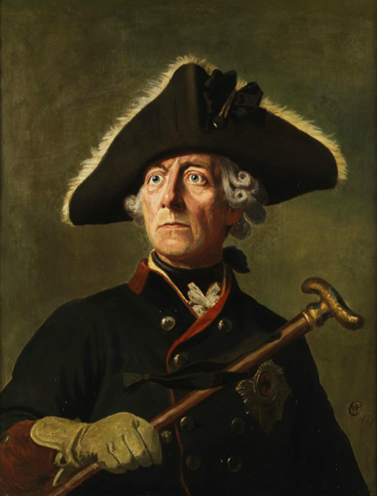
Fredrick the Great
The First Carnatic War (1746–1748)
As an extension of the European conflict, the First Carnatic War broke out in India. The French navy, under La Bourdonnais, captured Madras from the British in 1746. This created panic in British circles, and they turned to the Nawab of Carnatic for help.
The Nawab sent Mahfuz Khan with an army of 10,000 soldiers to push the French out of the Madras, But what followed was beyond belief.
At the Battle of Adyar, just 700 French troops, using techniques learned in the European wars—such as disciplined formations, coordinated firing lines, and better artillery handling—crushed Mahfuz Khan’s army. It shocked Indian rulers and marked a turning point in the military landscape of India.
This war ended with the Treaty of Aix-la-Chapelle in 1748. Madras was returned to the British, but the idea that Europeans could act as kingmakers in Indian politics had already taken root.
In his quest to become the kingmaker, Dupleix began interfering in the politics of local rulers, forming alliances to increase French influence. Robert Clive, on the other hand, closely observed Dupleix’s strategy and waited for the right moment to strike and that opportunity came during the succession struggles in Hyderabad and the Carnatic, which eventually led to the Second Carnatic War.
The Second Carnatic War (1749–1754)
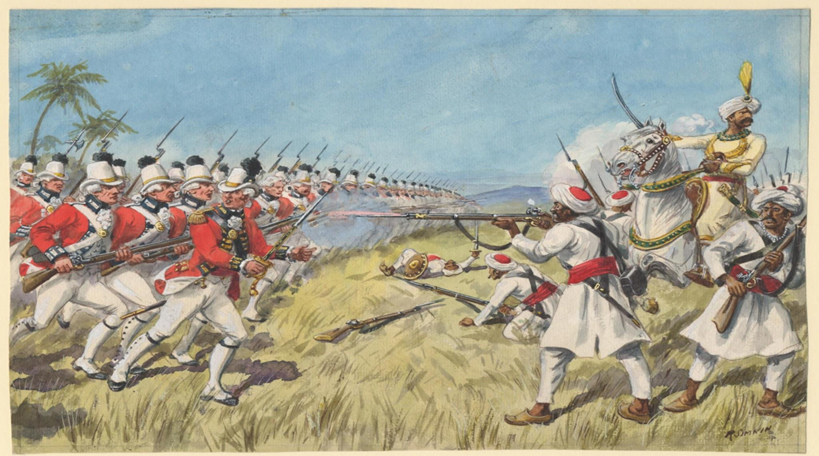
Even though Europe was at peace, India was boiling with internal power struggles. Succession disputes erupted in Hyderabad and Carnatic. Dupleix saw this as the perfect opportunity.
He supported Muzaffar Jang in Hyderabad and Chanda Sahib in Carnatic with French troops, aiming to install puppet rulers who would obey him. The British, alarmed, backed rival claimants like Nasir Jang and Muhammad Ali.
This wasn’t just a war of swords and guns anymore—it was a game of thrones, played with European pieces on Indian boards.
In 1751, Robert Clive led a bold raid to capture Arcot, the capital of Carnatic, with just a handful of men. This not only rattled French plans but also earned him fame. Indian allies began switching sides, sensing British dominance.
Yet, amidst this turmoil, the greatest blow to French ambitions came from France itself. Despite Dupleix’s rising influence, he was recalled by the French government in 1754, possibly due to political pressure and financial concerns back home.
France would regret this decision for generations. Dupleix, the man who had nearly carved a French empire in India, was dismissed at the peak of his power. His successors lacked his vision and diplomacy.
The war ended with the Treaty of Pondicherry, but the real winner was clear: the British had outplayed France, both in diplomacy and on the battlefield.
While India was still shaken up from this power struggle, tensions flared up again—this time in North America. What started as a local conflict soon pulled in all the major European powers, eventually leading to the outbreak of the Seven Years’ War.

Dupleix

Robert Clive
The Seven Years’ War (1756–1763)
What started in North America as the French and Indian War ( war between French and Britain but locally known as French and Indian war) over control of territories soon snowballed into the Seven Years’ War, dragging in all major European powers once again.
France initially had the upper hand. In North America and early parts of the war, they were winning. But Britain refused to back down. With William Pitt’s bold strategies, Britain launched aggressive campaigns—across oceans, continents, and right into India.
Amid this global conflict, Bengal caught the British eye—not just for its wealth, but for the strategic advantage it offered in the larger imperial contest. As the richest province of the Mughal Empire, Bengal was a prize worth fighting for. Political instability, trade disputes, and rising tensions with the Nawab of Bengal, Siraj-ud-Daulah, created the perfect opening. The British, under Robert Clive, saw an opportunity to strike—and they did. This led to the famous Battle of Plassey in 1757, a turning point that changed the course of Indian history and marked the beginning of British political dominance in the subcontinent
You Can Read Also: 18th Century Global Transformations: The Rise and Fall of Empires, Revolutions, and Industrialization
Battle of Plassey (1757)
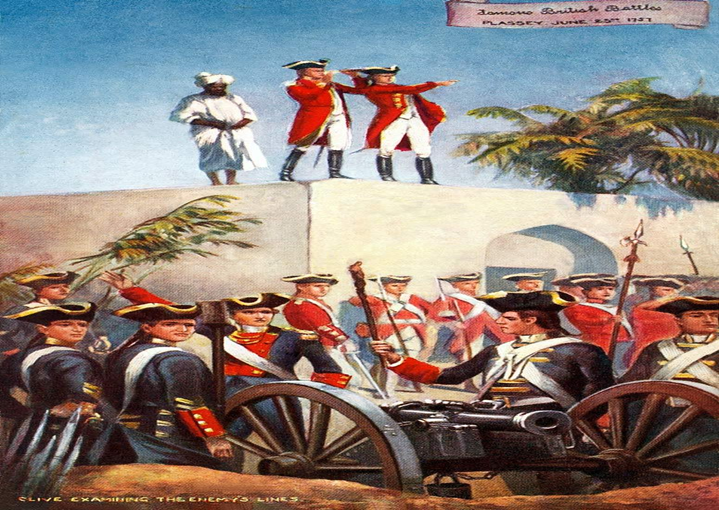
Battle of plassey 1757
Just before the Third Carnatic War could begin in full force, Robert Clive struck gold in Bengal.
In 1757, the British faced the powerful Nawab of Bengal, Siraj-ud-Daulah, who had captured Fort William in Calcutta. But the British, under Clive, not only recaptured the fort but also hatched a secret plan. They allied with Mir Jafar, Siraj’s commander-in-chief, promising to make him Nawab in return for betrayal.
The result? The Battle of Plassey.
Though Siraj had a massive army, his side was sabotaged from within. Clive’s far smaller force emerged victorious, and Mir Jafar was installed as a puppet ruler.
This victory didn’t just give the British control over Bengal—the richest province in India—it also gave them massive financial resources, which they would soon channel into defeating the French in South India during the Third Carnatic War.
The Third Carnatic War (1757–1763)
Meanwhile, France made one last attempt to reclaim India. They sent Count de Lally, a brave but rigid general, who struggled to win over Indian allies and mismanaged local diplomacy.
The British, now rich from Bengal and well-connected in the South, were in a much stronger position.
In 1760, the Battle of Wandiwash sealed the deal. British forces under Sir Eyre Coote decisively defeated the French, capturing key French officers and fortresses.
It wasn’t just a battle—it was the final nail in the coffin of French ambitions in India.
The Treaty of Paris (1763) ended the Seven Years’ War. France lost political rights in India and retained only a few symbolic trading posts like Pondicherry,Chandernagore and Mahe under tight restrictions.
What Happens Next?
With the French power crushed after the Third Carnatic War, the British emerged as the sole European power in India. Now, there was no foreign rival to stop them—India had become their playground.
The British didn’t need to fight everyone at once. They simply chose a smarter way:
“Befriend one Indian ruler, fight against another—and eventually, control them both.”
By using internal divisions among Indian rulers, they followed a policy of “divide and rule.” This marked the beginning of a new era—the systematic conquest of India, one war at a time.
Major Wars in the British Conquest of India (1767–1857)
Anglo-Mysore Wars
- First Anglo-Mysore War – 1767–1769 ( Treaty of Madras (1769) – Status quo restored; British promised support if Mysore was attacked.)
- Second Anglo-Mysore War – 1780–1784 ( Treaty of Mangalore (1784) – Both sides agreed to return territories; British prestige suffered)
- Third Anglo-Mysore War – 1790–1792 (Treaty of Seringapatam (1792) – Tipu Sultan ceded half his territory and paid indemnity)
- Fourth Anglo-Mysore War – 1799 ( No treaty – Tipu Sultan was killed; Mysore came under British control with a puppet ruler)
Anglo-Maratha Wars
- First Anglo-Maratha War – 1775–1782 ( Treaty of Salbai (1782) – British recognized Madhavrao II as Peshwa; temporary peace)
- Second Anglo-Maratha War – 1803–1805 (Several subsidiary alliances and treaties signed (like Treaty of Bassein in 1802 before war), resulting in major Maratha losses.)
- Third Anglo-Maratha War – 1817–1818 (No formal treaty – Resulted in complete defeat of Marathas; Peshwa abolished; territories annexed.)
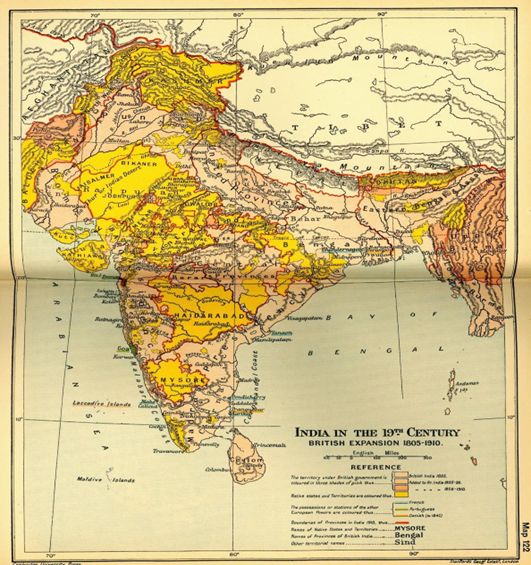
India in 19th Century
Anglo-Sikh Wars
- First Anglo-Sikh War – 1845–1846(Treaty of Lahore (1846) – Sikh territories reduced; British gained control of Jullundur Doab and Treaty of Bhairowal (1846) – British appointed Resident in Lahore; practical control over Sikh Empire)
- Second Anglo-Sikh War – 1848–1849 (No treaty – Punjab was annexed directly into the British Empire.)
Other Key Conflicts
- Anglo-Afghan War (First) – 1839–1842( Treaty of Kabul (1842) – British withdrew; war considered a disaster for British)
- First Anglo-Burmese War – 1824–26 (Treaty of Yandabo (1826) – British annexed Assam, Manipur, Arakan, and Tenasserim.)
- Annexation of Awadh – 1856(No treaty – Awadh annexed on grounds of misgovernance under the Doctrine of Lapse.)
Revolt of 1857 – The first major rebellion against British rule, marking the end of Company rule and the beginning of British Crown’s direct control.


